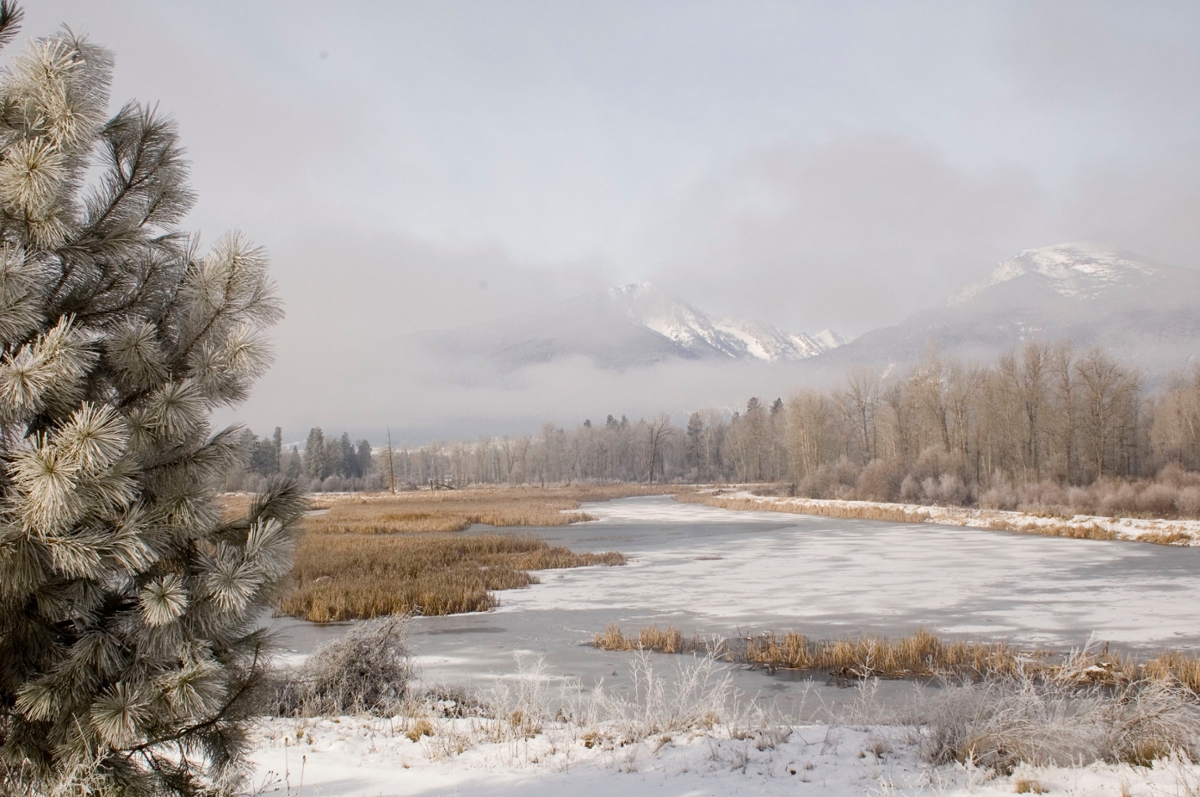Lee Metcalf National Wildlife Refuge (Part 1 of 2)
 Lee Metcalf National Wildlife Refuge: Fog rises from the frozen marshes of the Lee Metcalf National Wildlife Refuge. (Photo by Susie Graetz)
Lee Metcalf National Wildlife Refuge: Fog rises from the frozen marshes of the Lee Metcalf National Wildlife Refuge. (Photo by Susie Graetz)
It’s one of those gems people sometimes stumble onto by accident. We knew about the Lee Metcalf National Wildlife Refuge but never quite found our way to it until one October several years ago during an autumn-color photography search.
An intriguing mix of lifting fog, orange-leafed cottonwoods, still ponds and resting ducks welcomed us. Christened the Ravalli National Wildlife Refuge at its inception in 1963, the name was changed in 1978 to honor one of Montana’s great senators, the late Lee Metcalf, a champion of conservation who was instrumental in acquiring land for wildlife refuges.
Lee’s namesake wildlife refuge – an oasis in the once pastoral Bitterroot Valley – protects 2,800 acres of wetlands and meadows along the east bank of the Bitterroot River north of Stevensville. These protected acres are also a welcome respite to the growing number of residents populating the Bitterroot Valley.
The mixed landscape of the place gives it a special flavor. It offers outstanding western views of the big peaks and canyons of the Bitterroot Range coupled with a preserved homestead and the rich, historical stories from when the Corps of Discovery, first in September 1805 and then again in July 1806, passed through here.
Long before white settlement, the valley of the Bitterroot served as a main route for numerous Indian tribes that traveled through on their way to prairies to hunt bison. The Flathead and other Salish-speaking natives considered the Bitterroot their home grounds. Here they gathered plants and hunted.
Eventually, conflicts arose when settlers wanted the Indians pushed off tribal lands and agitated the U. S. government to get rid of them. Some of the Flathead chiefs, including Arlee, were coerced into signing the 1872 Removal Act, and they and their people were moved north to the Flathead Valley. Charlo, chief of the largest band of Flatheads, refused to sign the act. His tribe stayed in the valley until 1891, when increased pressure forced them north to join the other tribes on the Jocko Reservation, which eventually became the Flathead Reservation.
From the spring of 1874 until the spring of 1875, Peter Whaley served as the Indian agent on the Flathead Agency in the Bitterroot. Knowing the politics, Whaley, under the auspices of the Desert Land Act of 1877, asserted claim to 160 prized acres of agricultural land and in 1885 established the homestead that still exists on the refuge. It and some of the exterior buildings are an outstanding example of the earlier-day architecture of those trying to provide themselves with a comfortable place to live in rough country. The Whaleys cultivated the land, raised livestock and operated a meat market in Stevensville and a sawmill in Florence.
In 1905, the Whaley family sold out, and in 1912 the family’s patriarch, Peter, died. Through several other ownerships, the place was operated until at least the 1960s. Then, much of the homestead land was sold to the refuge. Harold Hagen, the last owner of the homestead, was given the right to live there until he died. After his wife passed on in 1988, the property was transferred to the Lee Metcalf National Wildlife Refuge. A majority of the funds used to buy the land came from the Duck Stamp program, which also has been responsible for purchasing millions of other acres of wetlands throughout the United States that now are part of the National Wildlife Refuge System. Today, the farmhouse stands as a historical accent to a fine haven for wildlife.
Department of Geography | University of Montana | Rick and Susie Graetz
